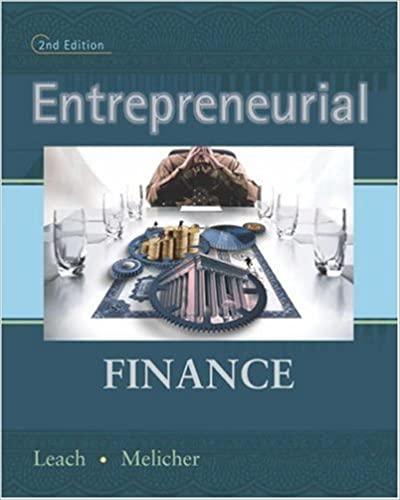Answered step by step
Verified Expert Solution
Question
1 Approved Answer
2: True False & Multiple Choice (4 Points) --Select All Correct Answers. 1. A partnership between a multinational company and a foreign investor in which
2: True False & Multiple Choice (4 Points) --Select All Correct Answers. 1. A partnership between a multinational company and a foreign investor in which contractually specified amounts of money and expertise are contributed by the participants for stated proportions of ownership and profit is a a) multinational corporation b) joint venture. c) floating relationship. d) consolidation. 2. The Wells Banking Company paid a $1.00 dividend in 2000 and a $1.75 dividend in 2005. If the required return is 15%, what is the value of the common stock? a) $56.63 b) $33.28 c) $67.45 d) $60.00 e) None of the above 3. The all-current-rate method is the method by which the functional currency-denominated financial statements of an MNC's subsidiary are translated into the parent company's currency. (T or F) 4. FASB No. 52 is a statement issued by the Financial Accounting Standards Board requiring American MNCs to first convert the financial statement accounts of foreign subsidiaries into the country's ________ currency and then translate the accounts into the parent firm's currency using the ________ method. a) spot; historical rate b) functional; all-current-rate c) principal; average rate d) forward rate; weighted average 5. An international bond that is sold primarily in countries other than the country of the currency in which the issue is denominated is called A) international bond. B) foreign currency bond. C) Euroback bond. D) None of the above 6. A common approach of estimating the variability of returns involving forecasting the pessimistic, most likely, and optimistic returns associated with the asset is called a) marginal analysis b) scenario analysis. c) break-even analysis d) financial statement analysis. 7. All of the following are considered to be major or "hard" currencies EXCEPT A) the Japanese yen. B) the British pound. C) the Mexican peso. D) the Chinese Renminbi. 8. Which asset would the risk-neutral financial manager prefer? (See below.) a) Asset A. b) Asset B. c) Asset C d) Asset D 9. Identify whether the characteristic listed below describes common stock (CS), preferred stock (PS), Treasury Stock (TS) or not a characteristic of stock (NA). a. ____May have cumulative and participating features. b. ____Last to be paid out in bankruptcy. c. ____Fixed financial obligation. d. ____Often used to increase equity in a company. e. ____Reserved exclusively for executives of the company. 10. The president or chief executive officer is elected by the firm's stockholders and has ultimate authority to guide corporate affairs and make general policy. (T or F) 11. Which of the following legal forms of organization is most expensive to organize? a) Sole proprietorships. b) Partnerships. c) Corporations. d) Limited partnership. 12. Which of the following legal forms of organization's income are taxed under individual income tax rate? a) Sole proprietorships. b) Partnerships. c) Corporations. d) Limited partnership. 13. In a corporation, the members of the board of directors are elected by the a) chief executive officer. b) creditors. c) stockholders. d) previous members appoint replacements 14. In a(n) ________, owners have limited liability with regard to the business. They are not personally liable for the malpractice of other owners a) limited partnership b) S-corporation c) partnership d) limited liability partnership e) All of the above 15. Net working capital is defined as a) a ratio measure of liquidity best used in cross-sectional analysis. b) the portion of the firm's assets financed with short-term funds. c) current liabilities minus current assets. d) current assets minus current liabilities. 16. The cash conversion cycle is the amount of time that elapses from the point when the firm inputs materials and labor into the production process to the point when cash is collected from the sale of the resulting finished product. (T or F) 17. One major risk a firm assumes in an aggressive financing strategy is a) the possibility that short-term funds may not be available when needed b) the possibility that long-term funds may not be available when needed. c) the possibility that collections will be slower than expected. d) the possibility that it will run out of cash. 18. ________ are the major source of unsecured short-term financing for business firms. a) Accounts receivable b) Accruals c) Notes payable d) Accounts payable 19. 1/15 net 30 date of invoice translates as a) a 1 percent cash discount may be taken if paid in 15 days; if no cash discount is taken, the balance is due in 30 days after the middle of the month. b) a 1 percent cash discount may be taken if paid in 15 days; if no cash discount is taken, the balance is due 30 days after the invoice date. c) a 1 percent cash discount may be taken if paid in 15 days; if no cash discount is taken, the balance is due 30 days after the end of the month. d) a 1 percent discount may be taken on 15 percent of the purchase if the account is paid within 30 days after the end of the month. 20. Breakeven analysis is used by the firm to determine the level of operations necessary to cover all fixed operating costs and to evaluate the profitability associated with various levels of sales (T or F)
Step by Step Solution
There are 3 Steps involved in it
Step: 1

Get Instant Access to Expert-Tailored Solutions
See step-by-step solutions with expert insights and AI powered tools for academic success
Step: 2

Step: 3

Ace Your Homework with AI
Get the answers you need in no time with our AI-driven, step-by-step assistance
Get Started


